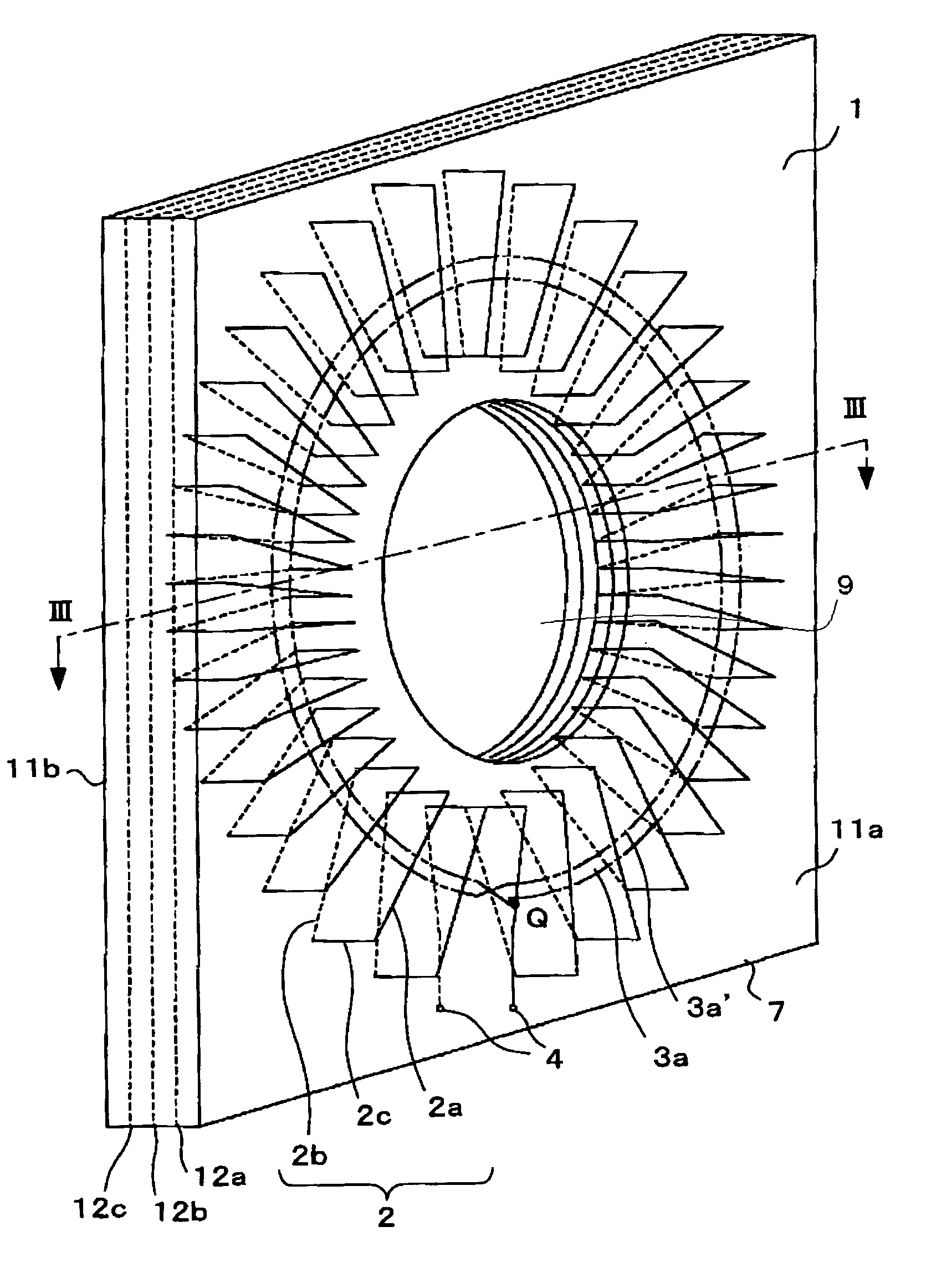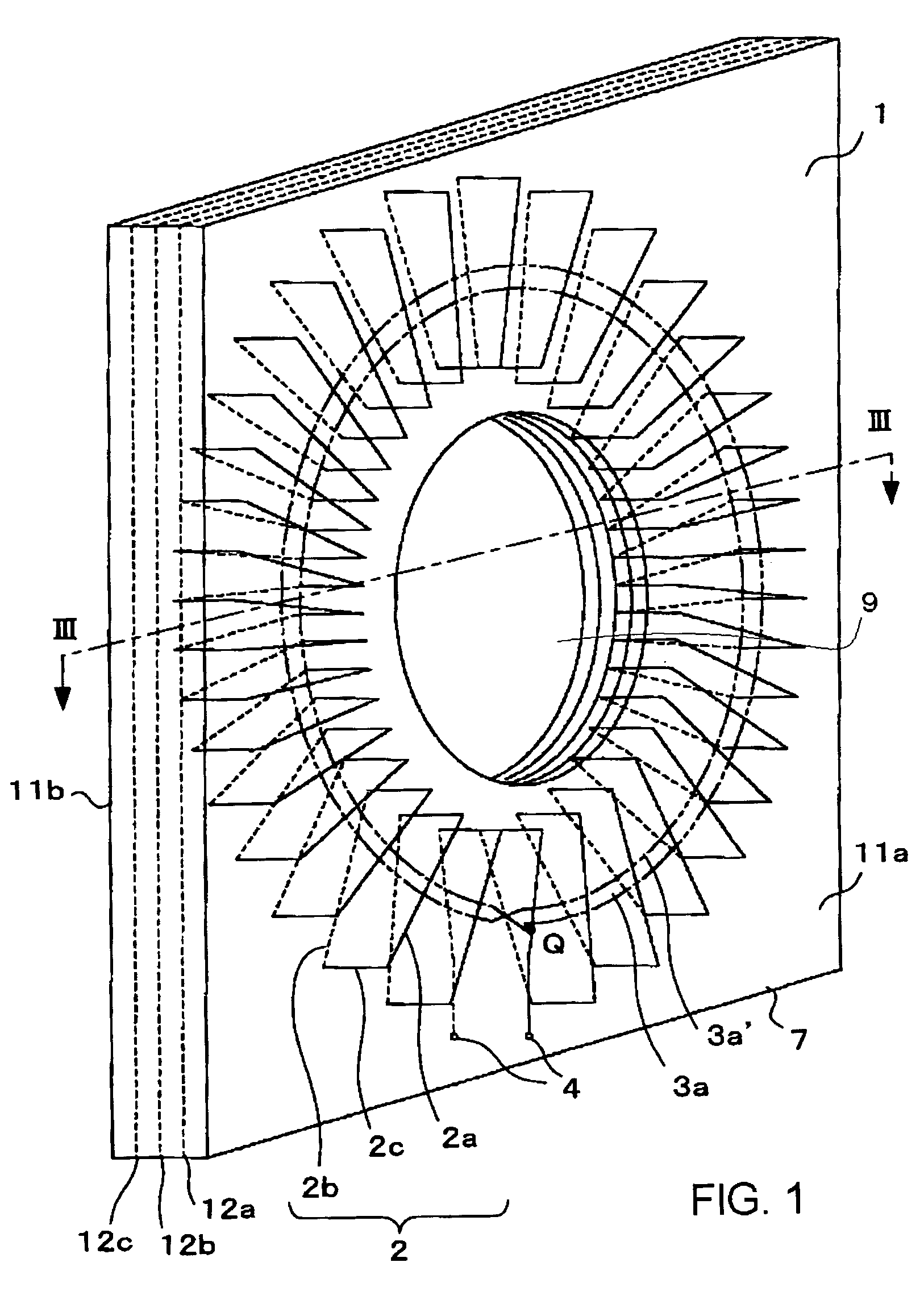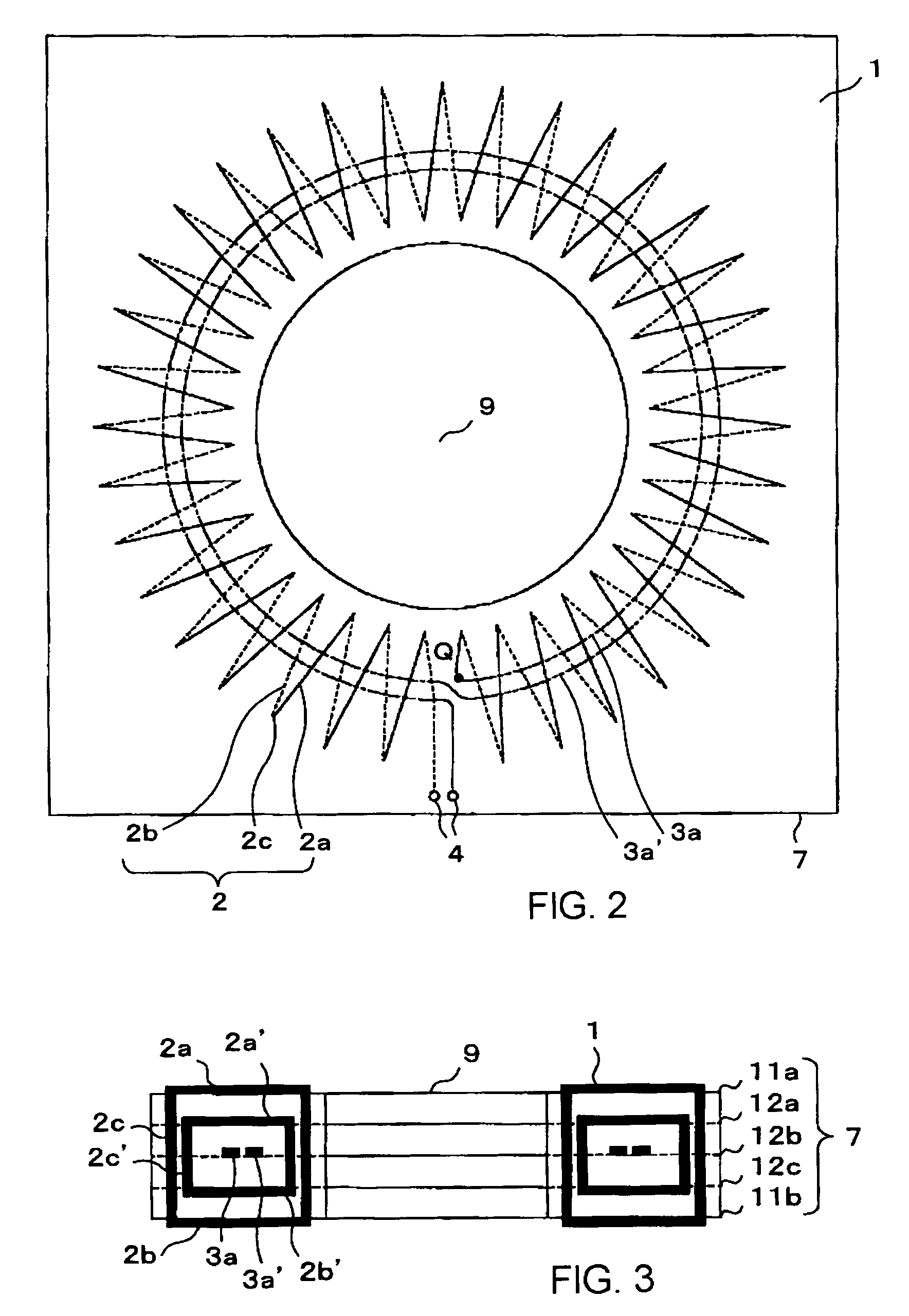Current transformer
a current transformer and transformer technology, applied in the direction of transformers/inductance coils/windings/connections, inductances, instruments, etc., can solve the problems of increasing the price of rogowski coils, increasing the error at the time of current measurement, and difficult to meet the above-mentioned conditions
- Summary
- Abstract
- Description
- Claims
- Application Information
AI Technical Summary
Benefits of technology
Problems solved by technology
Method used
Image
Examples
first embodiment
[0043](First Embodiment)
[0044]FIGS. 1, 2 and 3 show a Rogowski coil applied to a current transformer in accordance with a first embodiment of this invention. In this embodiment, firstly, a case forming doubled windings to a printed circuit board of multiple-layer composition with five surfaces is explained. In FIG. 1, a printed circuit board 7 is of multiple-layer composition with five surfaces consisting of a circuit board top surface 11a, a circuit board bottom surface 11b, and three circuit board conducting internal surfaces 12a, 12b, and 12c put between the circuit board top surface 11a and the circuit board bottom surface 11b. The printed circuit board 7 has a circular opening 9, in a center portion, which is penetrated by a conductor (not illustrated) in which alternating current of a main circuit passes.
[0045]FIG. 2 is an outline front view of the printed circuit board 7 from a direction of central axis of the opening 9. FIG. 3 is a sectional view along with the line III—III ...
second embodiment
[0056](Second Embodiment)
[0057]FIGS. 5, 6 and 7 show a Rogowski coil applied to a current transformer in accordance with a second embodiment of this invention. In this embodiment, firstly, a case forming fourfold windings to a printed circuit board of multiple-layer composition with eight surfaces is explained. In FIG. 5, a printed circuit board 7 is of multiple-layer composition with eight surfaces consisting of a circuit board top surface 11a, a circuit board bottom surface 11b, and six circuit board conducting internal surfaces 12a, 12b, 12c, 12d, 12e and 12f put between the circuit board top surface 11a and the circuit board bottom surface 11b. The printed circuit board 7 has a circular opening 9, in a center portion, which is penetrated by a conductor (not illustrated) in which alternating current of a main circuit passes.
[0058]FIG. 6 is an outline front view of the printed circuit board 7 from a direction of central axis of the opening 9. FIG. 7 is a sectional view along with ...
third embodiment
[0064](Third Embodiment)
[0065]FIG. 8 shows a Rogowski coil applied to a current transformer in accordance with a third embodiment of this invention. In this embodiment, firstly, a case forming fourfold windings to a printed circuit board of multiple-layer composition with eight surfaces is explained. In FIG. 8, a printed circuit board 7 is of multiple-layer composition with eight surfaces consisting of a circuit board top surface 11a, a circuit board bottom surface 11b, and six circuit board conducting internal surfaces 12a, 12b, 12c, 12d, 12e and 12f put between the circuit board top surface 11a and the circuit board bottom surface 11b. The printed circuit board 7 has a circular opening 9, in a center portion, which is penetrated by a conductor (not illustrated) in which alternating current of a main circuit passes.
[0066]As illustrated, radial metal foils 2a-1 are formed on the circuit board top surface 11a (the first surface) in form of a plurality of straight lines radially sprea...
PUM
| Property | Measurement | Unit |
|---|---|---|
| thickness | aaaaa | aaaaa |
| voltage | aaaaa | aaaaa |
| voltage | aaaaa | aaaaa |
Abstract
Description
Claims
Application Information
 Login to View More
Login to View More - R&D
- Intellectual Property
- Life Sciences
- Materials
- Tech Scout
- Unparalleled Data Quality
- Higher Quality Content
- 60% Fewer Hallucinations
Browse by: Latest US Patents, China's latest patents, Technical Efficacy Thesaurus, Application Domain, Technology Topic, Popular Technical Reports.
© 2025 PatSnap. All rights reserved.Legal|Privacy policy|Modern Slavery Act Transparency Statement|Sitemap|About US| Contact US: help@patsnap.com



